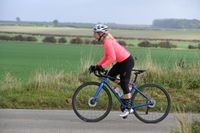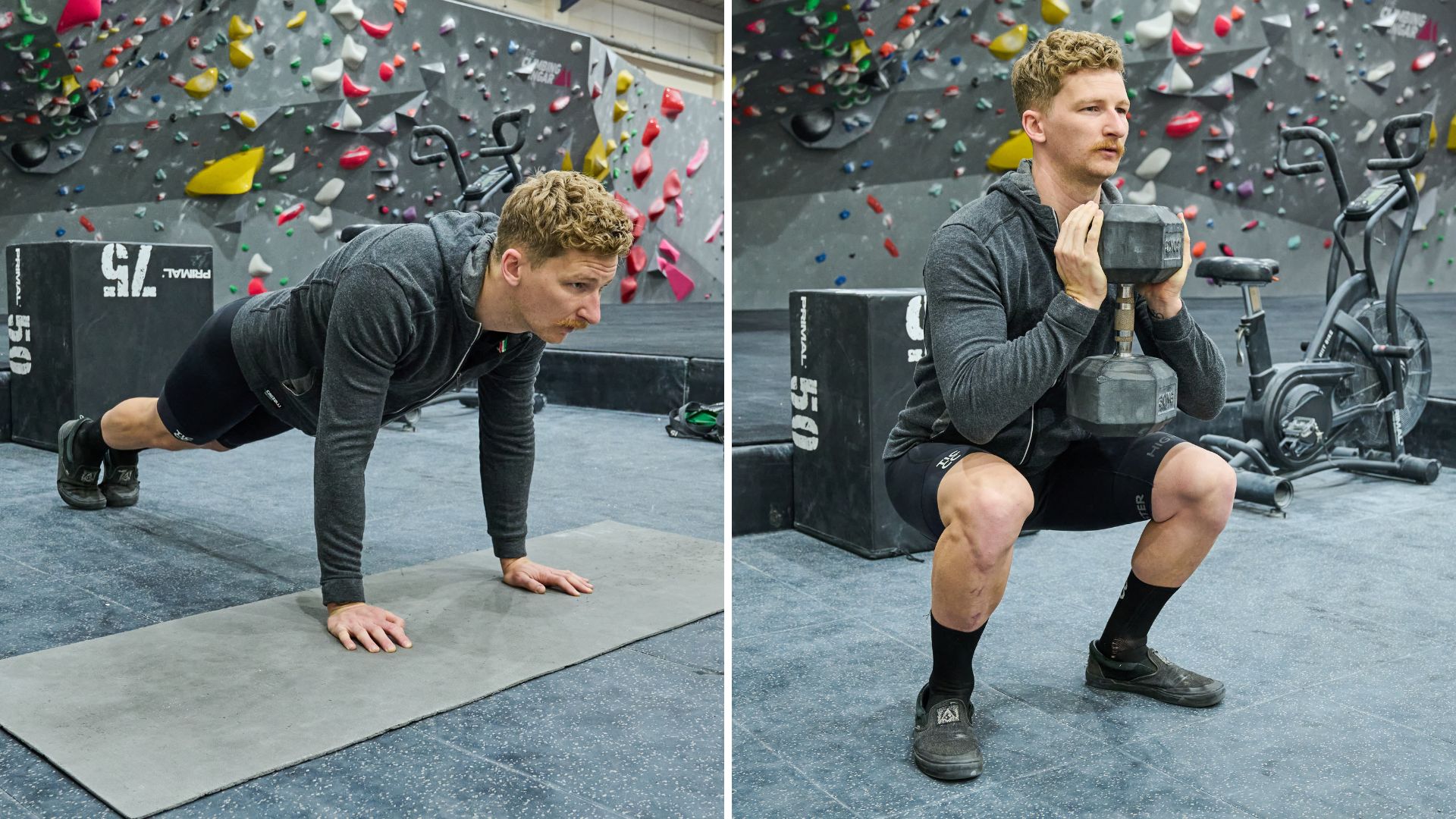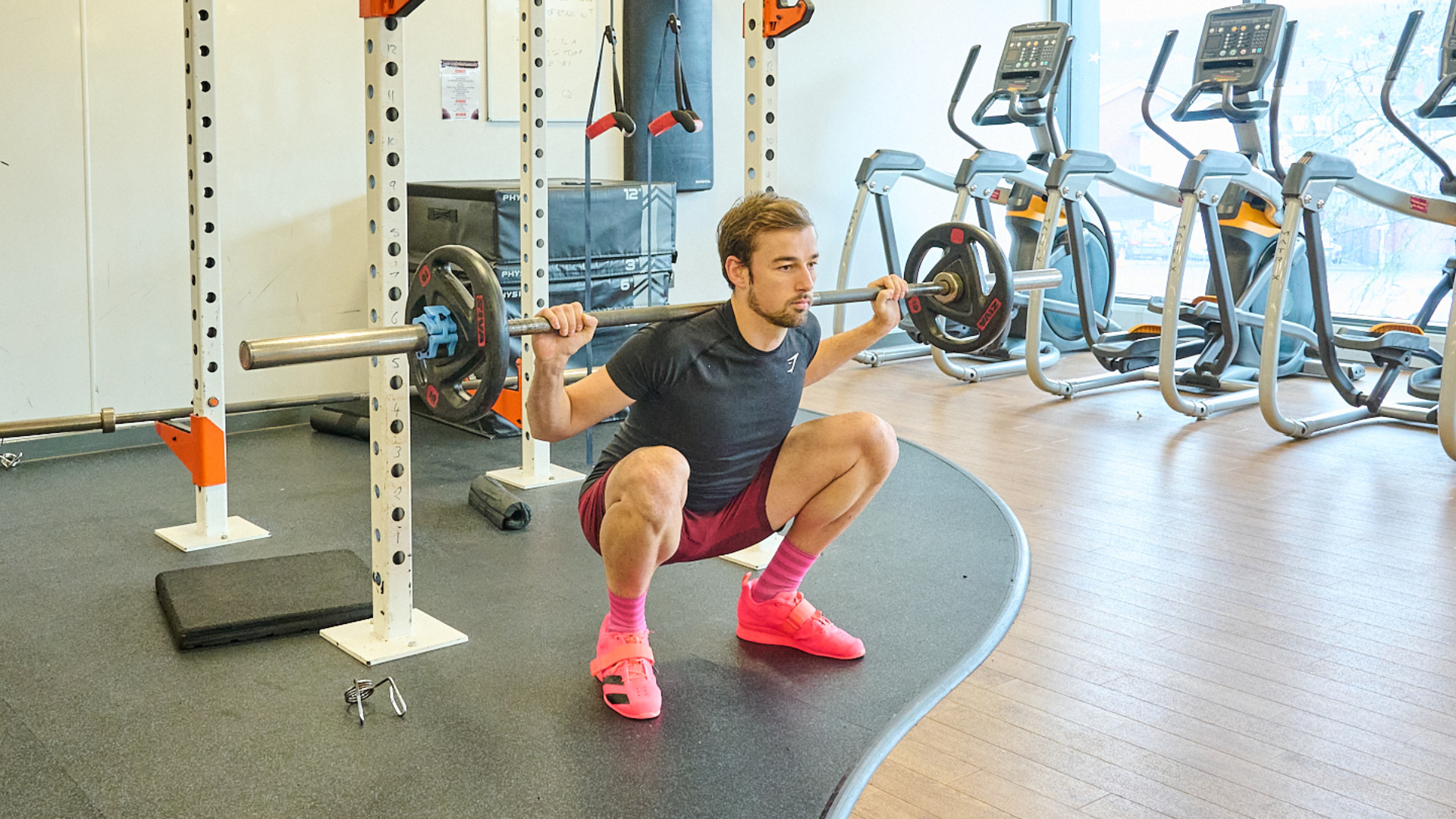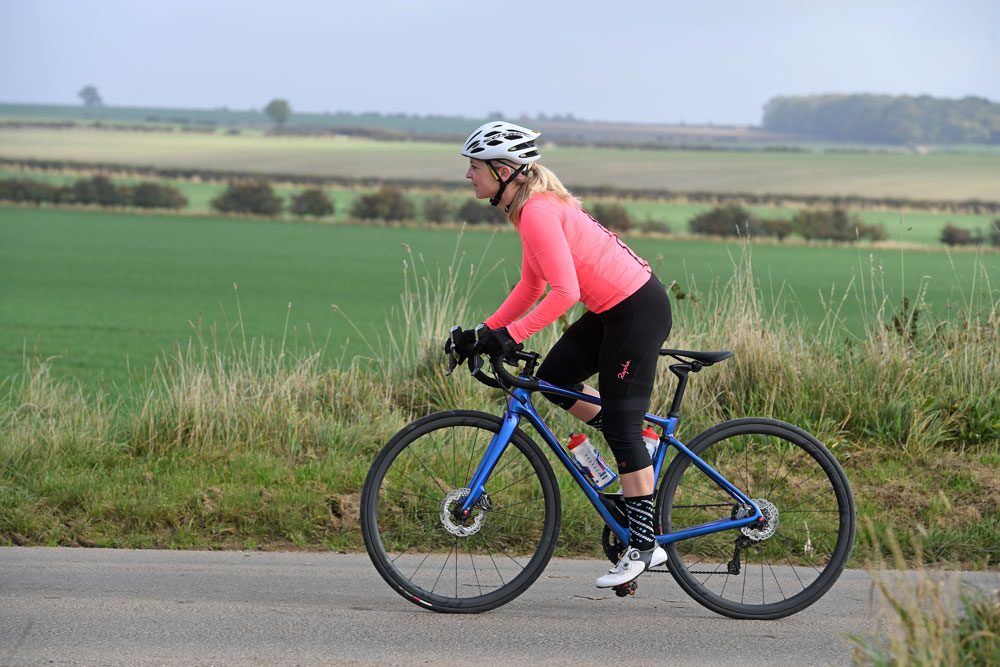Core training vs strength training: which will make you a better cyclist?
In our 'Will It Work?' series, Sports Science expert Hannah Reynolds investigates common fitness hacks, to determine if they're really any good for the time crunched athlete


Working on your ‘core’ to avoid injury, maintain a better riding posture and reduce fatigue has been a dominant trend of the last two decades. However, there’s a great deal of evidence to suggest that integrating conventional, heavier resistance training which focuses on building overall muscle strength and endurance is a better use of time.
Two examples of such exercises are the weighted squat, and the plank. A plank primarily targets the core muscles, including the rectus abdominis, transverse abdominis, and obliques, while also engaging the shoulders, chest, and lower back muscles to stabilise the body, for a 2-minute exercise that can be done anywhere it does a lot for you. On the other hand, a weighted resistance exercise such as a squat predominantly works the muscles of the lower body, including the quadriceps, hamstrings, glutes, and calves, while also engaging the core to maintain proper posture. Both exercises enhance overall muscle strength and endurance; however, the plank focuses more on core stabilisation and upper body endurance, whereas the squat builds lower body strength and power.
Is conventional strength training superior to core-focused exercises for trained cyclists? To put it simply: if you can only do one, which is better, dynamic, weighted exercise (‘strength’), or, static, bodyweight exercises (‘core’)?
Expert Opinion: Will It Work?

Strength training with added resistance may carry more bang for buck
The widely held belief is that core training is part of improving your riding posture and preventing injury. A strong core a stabilises the trunk and upper body making it a better foundation for explosive power. One highly memorable phrase being that you ‘can’t shoot a cannon from a canoe’. Some cyclists still eschew traditional strength training due to fears of weight gain and “bulking up”. However, coaching and sports science tend to largely advocate for lifting heavy, building the muscle mass of a track sprinter takes concerted effort, volume and nutrition.
Core vs Strength exercises
Most weighted strength exercises also benefit the core, and core exercises do build strength. So, what exactly do we mean by these terms?
In the study, those completing 'strength' exercises performed half squats, a leg press with one leg at a time, one-legged hip flexion (knee raises), and ankle plantar flexion (calf raises) - all weighted.
Those completing 'core' exercises did glute bridges, abdominal planks, and prone back extensions.
Now, you can hold a static squat, or load up a glute bridge, changing the dynamic of the exercise. For the purpose of this article, when we refer to ‘strength’ exercises, we consider these to be weighted, dynamic movements (squats, deadlifts, leg presses), whilst ‘core’ exercises often use body weight and are static.
A recent journal article compared core exercise with conventional strength training or no strength training in trained road cyclists. Three groups of riders either did just core training, just strength training or just their usual cycle training with no additional core or strength work. The results showed an increase in power output for five seconds, 60 seconds, five minutes, and 20-minute efforts for the strength training group, with the researchers concluding that conventional strength training should be added to the training routine of road cyclists.
As well as performance improvements lifting weights has the benefit of enhancing bone density and improving joint health, both important areas for preventing injury or osteoporosis which cyclists are particularly prone to developing.
Vicki Farrington is a Strong First Lifting Coach and Biomechanics coach at Strength 2 Speed, she is also owner of Sports Recovery Kendal specialising in soft tissue therapy, “firstly, planks or squat, or rather resistance training and core training are not mutually exclusive, you can do both. The important thing is being consistent, only by sticking to regular sessions and building up over time will you see progress.”
The latest race content, interviews, features, reviews and expert buying guides, direct to your inbox!
Strength 2 Speed is a fitness studio designed for endurance athletes based at Mapdec Cycle Works, the majority of members are cyclists, triathletes and endurance athletes looking to improve their performance. The reasons for adding strength and resistance work to your training is very simple, “a stronger muscle is able to generate more force. Every pedal stroke generates more power which can translate into more speed.” When it comes to bang for your buck resistance work does more for you, including working your core.
“There will be bigger performance benefits to cycling in doing weighted movements than just doing core workouts. For example the squat is a compound exercise and multi joint activity, even if it is unweighted you are impacting more of your musculoskeletal system than doing an isometric plank. When you are squatting you are working on not just strength but also core, coordination, balance, proprioception, muscular development and mobility.”
As a soft tissue specialist Vicki treats injured cyclists and works with athletes to build a more injury-resistant body, “in terms of injury prevention resistance training will strengthen ligaments and tendons as well as bones so you are less likely to be impacted by an accident and you are also less likely to suffer from joint pain, niggles or injuries.” However, one concern when starting resistance work is the risk of injuring yourself in the gym, “there is a greater risk to being weak than the risk of injury from doing weights or resisted training correctly,” Vicki explains, “it is easy to mitigate the risk by taking part in a class where an instructor watches your form or having one-to-one personal training at the start of the journey to nail your technique.” Steady, planned progression is also part of avoiding injury, “start with body weight and go up from there.”
Pros of weighted strength training
- Enhanced muscle mass and power output
- Improved bone density and joint health
- Better overall performance in sprints, time trials and hill climbs
Cons of weighted strength training
- Potential for muscle imbalances
- Risk of overtraining and fatigue
- Higher likelihood of acute injuries if not executed properly
We tried it
When I was competing regularly I included three strength training sessions a week using weights alongside core exercises and cycle training. With no controlled testing at the time I have no evidence as to whether it was improving my performance, but, I enjoyed the feeling of lifting heavy. Getting back to weights many years later, however, was a painful experience with muscle soreness and additional fatigue. I’m older and creakier than I was so I needed a lot of help with form and technique before I could contemplate moving onto heavier weights and the emphasis on correct posture when lifting ensured that my core was not neglected. The process of engaging neglected muscles and firing up my core made me sit more lightly in the saddle and overall strength training made me feel more robust
The bottom line
Conventional strength training can be beneficial for trained road cyclists, provided it is smartly integrated into your training schedule and done with careful attention to correct technique and form. Strength training has many benefits particularly with regard to bone health and it engages your core so even without considering the performance aspects it is a worthwhile addition to your programme for all round health and conditioning. The abiding benefit of core workouts is that they are body weight dependent, don’t require equipment and can be done almost anywhere in a time efficient way so there is no real negative to continuing with them.
Hannah Reynolds interest in cycling began while studying for a degree in Sports Science at the University College Chichester and surrounded by elite level cyclists. She is now undertaking a PhD at Sheffield Hallam University investigating the use of e-bikes by older people.
A committed dabbler whose passion outweighed her talent Reynolds has competed across all disciplines of cycling bar BMX. In the very distant past she has been south-east road race champion, southern cyclo-cross champion and finished third in the European 24hr Solo mountain-bike champs in 2011. She was also the Fitness Editor of Cycling Weekly for 15 years.
Hannah Reynolds is author of several cycling books, France-en-Velo a guide to the ultimate 1000 mile cycle route from the Channel to Med; Britain's Best Bike Ride. LEJOG1000; A 1000 mile journey from Land's End to John o' Groats and 1001 Cycling Tips.
